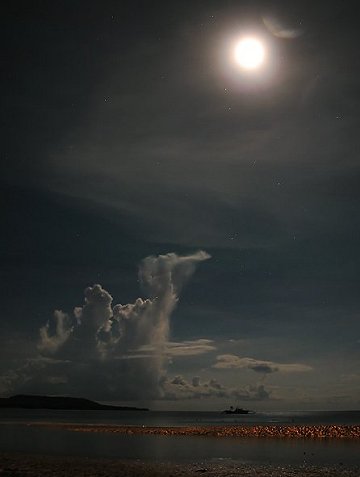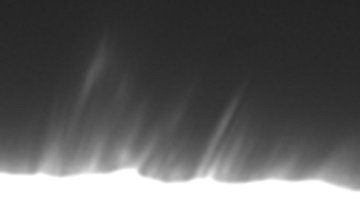 Where's Saturn? Is that a UFO--or the ISS? What's the name of that star? Get the answers from mySKY--a fun new astronomy helper from Meade. Where's Saturn? Is that a UFO--or the ISS? What's the name of that star? Get the answers from mySKY--a fun new astronomy helper from Meade. AURORA WATCH: A solar wind stream is buffeting Earth's magnetic field and causing mild geomagnetic storms. Auroras may be difficult to see, however, due to bright moonlight. THUNDER MOON: Picture this: You step outside on a warm summer evening. In the distance, a stroke of lightning plunges to Earth. One-one-thousand, two-one-thousand, three-one-thousand. The air shakes with thunder and, at that moment, the clouds part to reveal a brilliant full Moon. Too good to be true? It could happen tonight. There's a full Moon out, the "Thunder Moon" according to folklore, named after the storms of summer. Step outside and see what happens: 
"The scene was breathtaking," says Arnel C. Manlises, who sends this picture from the Philippines. "Majestic clouds reached up to the Moon while the silhouette of a solitary boat headed out to sea in calm waters." EXTRA: Last night, "I photographed the Moon rolling down a small hill on the prairie," reports Lyndon Anderson north of Bismarck, North Dakota. "I sure am glad that I don't have to roll it back up again for the return trip tonight." [photo] SOLAR SPICULES: Grass is growing on the sun. Not really, but the simile is fair enough; regard this July 26th photo of the sun's limb contributed by Harald Paleske of Langendorf, Germany: 
Photo details: 225/200 Unigraph, f/9.5, 1/650sec exposure
The blades are called spicules. They're jets of gas as tall as North America firing upward from the surface of the sun. Even when solar activity is "low," it is possible to find spicules in action. More than 100,000 are shooting up from the sun at any given moment. How does that compare to your lawn? There are about 100,000 blades of grass per square foot. Stand on a verdant patch of frontyard, feet side by side, and you've got a whole star's worth of spicules underfoot.
.2007 Noctilucent Cloud Gallery
[Night-Sky Cameras] ["Noctilucent Cloud"--the song] | 
